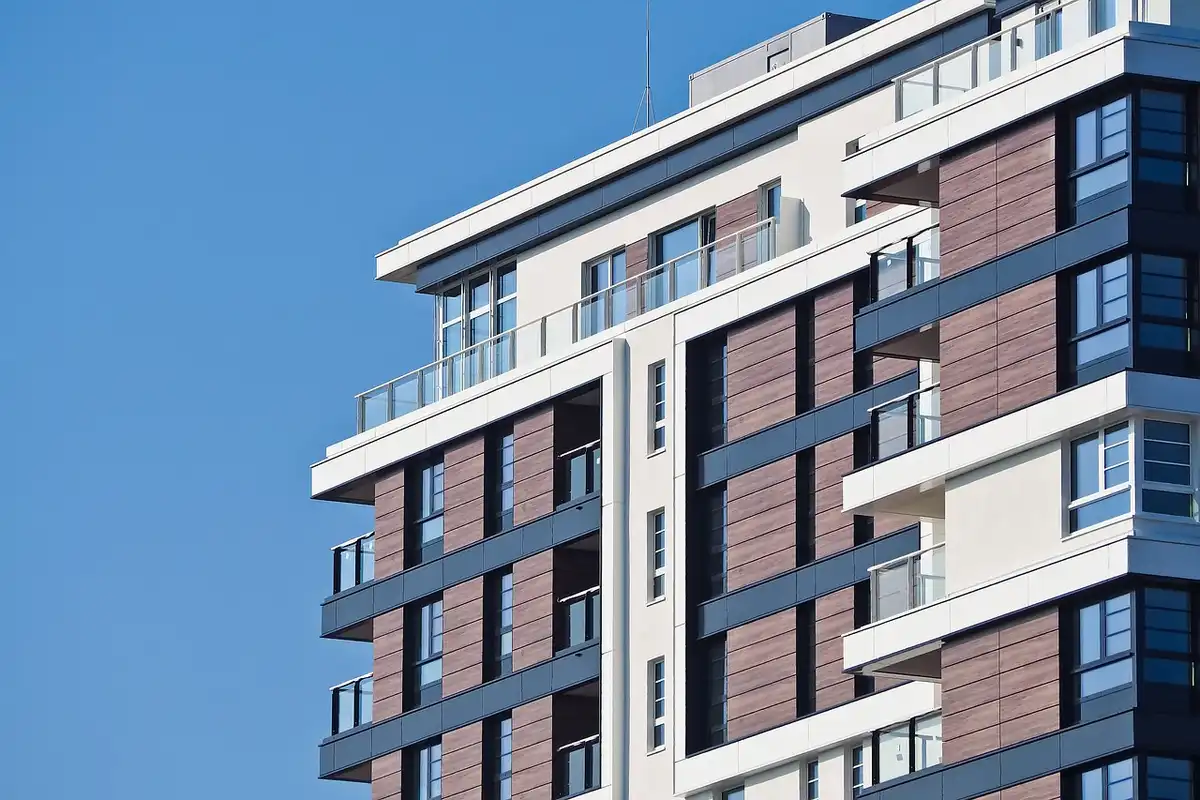Logistics planning for single ply membrane delivery advice, Building roofing system, Roof construction
Logistics Planning for Single Ply Membrane Delivery
20 June 2025
Single ply membranes are an essential component in modern roofing systems, offering flexibility, durability, and efficiency. Their effective delivery to construction sites is crucial to maintain project timelines and quality standards. In this guide, we’ll explore the logistics of delivering single ply membranes, including key planning considerations, challenges, and best practices to ensure successful outcomes.
With many moving parts involved, from transportation modes to weather and site access, a well-coordinated logistics plan is vital. Let’s delve into what makes single ply membrane delivery both complex and critical.
What Are Single Ply Membranes and What Are Their Primary Applications in Construction?
Single ply membranes are flexible, waterproof roofing sheets used primarily in commercial and industrial building construction for flat or low-slope roofs.
Definition and Composition
Single ply membranes are flexible sheets made primarily of synthetic polymer materials, most commonly TPO (Thermoplastic Polyolefin), PVC (Polyvinyl Chloride), or EPDM (Ethylene Propylene Diene Monomer). These materials come in large rolls and are used predominantly for flat or low-sloped roof applications. As flat roof waterproofing membranes, they are engineered to withstand weather extremes and environmental stress.
Single ply membranes are lightweight, waterproof roofing materials used mainly for flat and low-slope roofs in commercial and industrial buildings.
Key Applications:
Single ply membranes offer several advantages that make them a preferred choice in modern construction:
- Flat and Low-Slope Roofs – Most common in commercial and industrial buildings.
- Green Roof Systems – Act as a waterproof layer below vegetation.
- Re-Roofing Projects – Ideal for retrofitting or upgrading existing roofs.
- Cool Roof Installations – Reflective membranes help reduce energy consumption.
- Temporary or Modular Buildings – Quick and efficient roofing solution.
- Foundation and Basement Waterproofing – Occasionally used below-grade for water protection.
These varied applications highlight the versatility and effectiveness of single ply membranes across different construction needs.
Why Is Effective Logistics Planning Critical for the Delivery of Single Ply Membranes?
Effective logistics planning ensures single ply membranes are delivered on time, in optimal condition, and ready for efficient installation.
1. Prevention of Delays
Construction projects run on tight schedules. Delays in membrane delivery can halt roofing progress and disrupt subsequent construction phases.
2. Avoiding Material Damage
Improper handling during transportation can result in creasing, puncturing, or contamination. A logistics plan reduces such risks.
3. Cost Control
Late deliveries or mismanaged storage can result in increased costs due to:
- On-site storage fees
- Labour downtime
- Replacement of damaged membranes
4. Coordination with Installation Teams
Logistics planning ensures that materials arrive just in time for installation, avoiding both early and late arrivals.
What Factors Influence the Selection of Transportation Methods for Single Ply Membrane Delivery?
Transportation methods for single ply membrane delivery are influenced by factors like distance, delivery timeline, membrane type, and site accessibility.
| Factor | Impact on Transportation Method |
| Distance to Site | Long-haul vs local courier selection |
| Quantity and Size | Requires flatbeds or curtain-side lorries |
| Urgency | Might necessitate express or dedicated delivery |
| Load Sensitivity | Mandates use of vehicles with protective features |
| Site Access | Requires adaptable vehicle sizes |
Special Considerations:
- Roll width and length often necessitate side-loading vehicles.
- Temperature-sensitive materials may require climate-controlled transport.
- Stacking protocols must be observed to prevent deformation.
How Do Site Access and Location Impact Logistics Planning for Membrane Delivery?
Site access and location affect logistics planning by determining the type of transport, delivery timing, and equipment needed for safe and efficient membrane unloading.
Urban Sites
- Limited parking and manoeuvring space
- Time-restricted delivery windows
- Potential traffic congestion
Remote/Rural Sites
- Unpaved roads may require all-terrain delivery vehicles
- Greater lead time needed due to travel distance
Restricted Access Sites
- Requires coordination for crane or forklift offloading
- Delivery outside peak working hours to minimise disruption
Logistical Solutions:
- Pre-site delivery reconnaissance
- Use of smaller shuttle vehicles
- Modular delivery schedules
What Role Do Weather Conditions Play in Scheduling and Transporting Single Ply Membranes?
Weather conditions play a key role by affecting transport safety, delivery timing, and membrane handling to prevent damage from moisture, wind, or extreme temperatures.
Material Sensitivity
Single ply membranes, especially PVC and TPO, can become brittle in freezing temperatures or overly pliable in extreme heat, risking damage during handling.
Delivery Challenges
- Heavy rain can hinder offloading procedures
- Snow or icy roads can delay transport
Scheduling Best Practices:
- Monitor weather forecasts closely
- Avoid scheduling deliveries in periods of extreme weather
- Use weather-resistant packaging
How Can Storage Requirements and Handling Procedures Affect Delivery Logistics?
Storage requirements and handling procedures impact delivery logistics by dictating how membranes are packaged, transported, and unloaded to prevent damage and ensure readiness for installation.
| Consideration | Impact |
| Storage Conditions | Must be dry, flat, and sheltered from sunlight |
| On-site Equipment | Availability of forklifts or cranes affects delivery type |
| Labelling | Clear identification helps avoid misplacement |
Proper Handling Protocols:
- Avoid dragging rolls to prevent membrane tearing
- Use wide slings or padded forks for lifting
- Store upright or on pallets, never directly on the ground
What Are the Best Practices for Coordinating Delivery Timelines with Construction Schedules?
Best practices for coordinating delivery timelines with construction schedules include clear communication with suppliers, just-in-time delivery planning, accounting for potential delays, and aligning deliveries with on-site readiness to avoid storage issues and workflow disruptions.
Just-in-Time (JIT) Delivery
This method ensures materials arrive right before installation, reducing the need for on-site storage.
Milestone-Based Delivery Planning
Align deliveries with key project milestones to maintain workflow.
Communication Is Key:
- Daily logistics check-ins
- Real-time updates between supplier and site manager
- Use of centralised project scheduling tool
What Technologies Can Support Efficient Tracking and Management of Membrane Deliveries?
To ensure timely and accurate delivery of single ply membranes, various technologies can be integrated into logistics planning and execution:
- GPS Fleet Tracking – Monitors real-time vehicle location to enhance delivery precision.
- RFID Tagging – Allows detailed tracking of materials from warehouse to job site
- Warehouse Management Systems (WMS) – Improve inventory control and dispatch efficiency.
- Construction Logistics Software – Coordinates deliveries with construction schedules for minimal disruption.
- Mobile Apps and Dashboards – Provide instant access to delivery status and alerts for all stakeholders.
- Telematics Systems – Offer performance data on transport vehicles and help optimize routes.
- Barcode Scanning – Enables quick, accurate handling and inventory updates.
- Cloud-Based Platforms – Facilitate real-time collaboration among suppliers, transport teams, and site managers.
These technologies not only streamline delivery operations but also reduce delays, minimize damage risks, and improve overall project coordination.
How Can Risks and Delays in Membrane Delivery Be Mitigated Through Contingency Planning?
To ensure efficient and reliable delivery of single ply membranes, it is essential to first recognize potential risks and then develop effective contingency strategies to manage them.
Common Risk Types in Membrane Delivery
- Adverse Weather Conditions – Rain, wind, or extreme temperatures affecting transport and handling.
- Traffic Congestion or Route Disruptions – Road closures or unexpected delays during delivery.
- Limited Site Access – Tight or restricted entry points making unloading difficult.
- Misaligned Delivery Schedules – Deliveries arriving before the site is ready or after the needed time.
- Material Damage in Transit – Improper handling or insecure packaging during transport.
Contingency Strategies to Mitigate Delivery Risks
- Weather Monitoring & Buffer Days – Plan deliveries around forecasts and allow extra time.
- Alternate Routes and Real-Time GPS – Prepare multiple transport paths and use tracking tools.
- Pre-Site Assessments – Inspect delivery zones ahead of schedule for accessibility.
- Just-in-Time Delivery Scheduling – Align deliveries closely with construction progress.
- Reinforced Packaging and Secure Handling SOPs – Protect membranes from transit damage.
With proper contingency planning, construction teams can proactively reduce risks and avoid costly delays, ensuring membrane deliveries are smooth, timely, and aligned with project goals.
What Are the Environmental Considerations in the Logistics of Membrane Delivery?
1. Transport Emissions
- Transport vehicles contribute to greenhouse gas emissions; route optimization and use of low-emission vehicles can reduce impact.
2. Packaging Waste Reduction
- Excessive or non-recyclable packaging adds to landfill waste; using reusable or recyclable materials helps mitigate this.
3. Material Handling Impact
- Improper storage or handling may lead to product damage and waste, requiring additional manufacturing and transport.
By integrating eco-conscious planning into delivery logistics, construction teams can reduce environmental impact while maintaining efficiency and material integrity.
How Does Collaboration Among Suppliers, Contractors, and Logistics Providers Optimise Delivery Planning?
Effective collaboration between suppliers, contractors, and logistics providers is essential for optimizing the planning and execution of single ply membrane deliveries.
Integrated Planning
Shared access to construction timelines allows suppliers to align production and delivery.
Clear Communication Channels
- Single point of contact per stakeholder
- Use of digital communication platforms
Benefits of Collaboration
- Reduced risk of missed deliveries
- Enhanced transparency
- Quicker resolution of issues
| Stage | Role | Responsibility |
| Procurement | Contractor | Confirms quantity and timing |
| Scheduling | Supplier | Plans manufacturing and dispatch |
| Delivery | Logistics provider | Executes safe and timely transport |
| On-site | Site manager | Prepares for offloading and installation |
Final Thoughts
Effective logistics planning is crucial to the successful delivery of single ply membranes. From selecting the right transport method and scheduling deliveries around site access and weather, to incorporating technology and environmental sustainability—each step plays a vital role in ensuring timely, damage-free delivery.
Construction stakeholders must work collaboratively, leveraging technology, contingency strategies, and sustainable practices to optimise their delivery plans. In doing so, they can minimize delays, protect material integrity, and keep projects on track. If you’re involved in roofing or membrane installation, investing time in robust logistics planning will pay dividends in efficiency, cost savings, and construction quality.
Comments on this guide to Logistics planning for single ply membrane delivery article are welcome.
Roofing Articles
Roofing Posts
Flat roof repair

image source : pixabay.com
Insulation Options for Your Roof
How to make your roofing company a success
+++
Property Design
Contemporary Property Designs – recent architectural selection from e-architect below:
Comments / photos for Logistics planning for single ply membrane delivery page welcome






